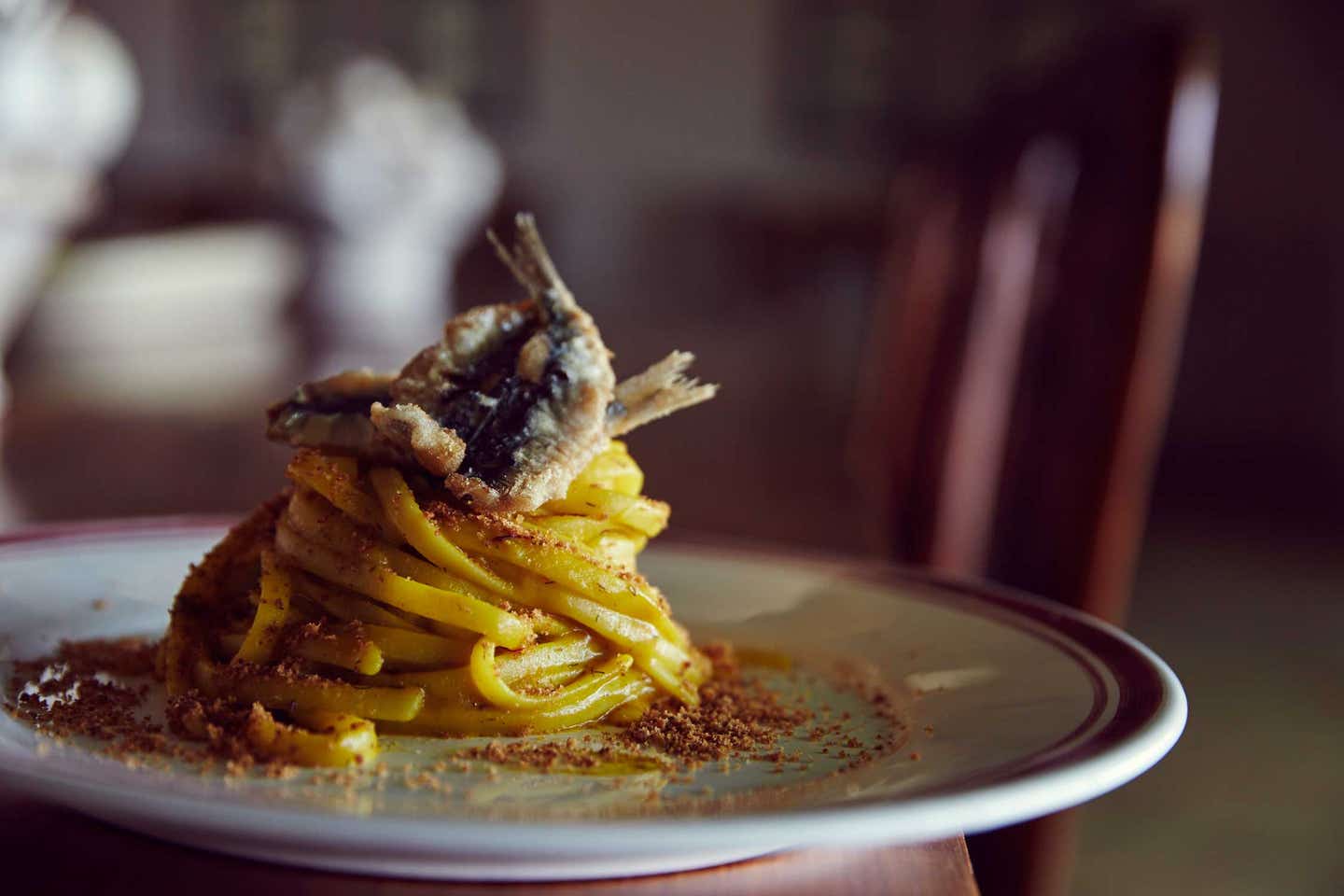
Pasta Con Le Sarde is the Perfect Dinner to Make Tonight
We won’t even judge if you add a little tomato sauce
Some of the best dishes are born from a sparse cupboard and an empty fridge. As legend has it, that's how the classic Sicilian dish pasta con le sarde came about. Well, that and a false charge of kidnapping. Let us explain.
It all started in the early 9th century A.D. with the commander of the Byzantine navy in Sicily, Euphemius of Messina. The commander's growing influence in the region became a threat to the empire, so the emperor ordered his demotion and falsely charged him with kidnapping and marrying a nun. Euphemius fled to Africa and enlisted the Saracens (Muslim Arabs) to build an army to retaliate. With his new army, he sailed back to the southern coast of Sicily, but the sailors were tired and hungry, and the pantry was almost empty. Thinking quickly, the ship's cook prepared a dish with the few ingredients he had left: wild fennel, pine nuts, dried pasta, saffron, raisins, and sardines pulled straight from the Sicilian bay. And so pasta con le sarde was created (supposedly).
Today, there are regional variations all over Italy. Palermo claims to be the birth city of the dish with a recipe that prohibits the use of tomato sauce. "In Palermo, this dish is literally in every restaurant," says Stacy Adimando, SAVEUR's executive editor. "It's very casual and very traditional. You will most often see it made with al dente bucatini, the fat tubular pasta. Some versions will have crispy breadcrumbs on top or mixed into the pasta. Some have cooked fennel. But there is always a sweet dried fruit and the sardines are fresh and served in big chunky pieces."
But in the Enna province, tomato is a key ingredient, and in Agrigento, it's common to use a dollop of tomato paste. In Messina, the sauce is totally white, discarding even the saffron. There is even a northern variation created by the Sicilian immigrants in Milan called a la Milanesa, which is made with sardines preserved in salt, given the lack of fresh fish. We'll leave you with our version, inspired by our exploration of the Italian island's multicultural origins from our story 'Eating the Arab Roots of Sicilian Cuisine.'
Keep Reading
Continue to Next Story










